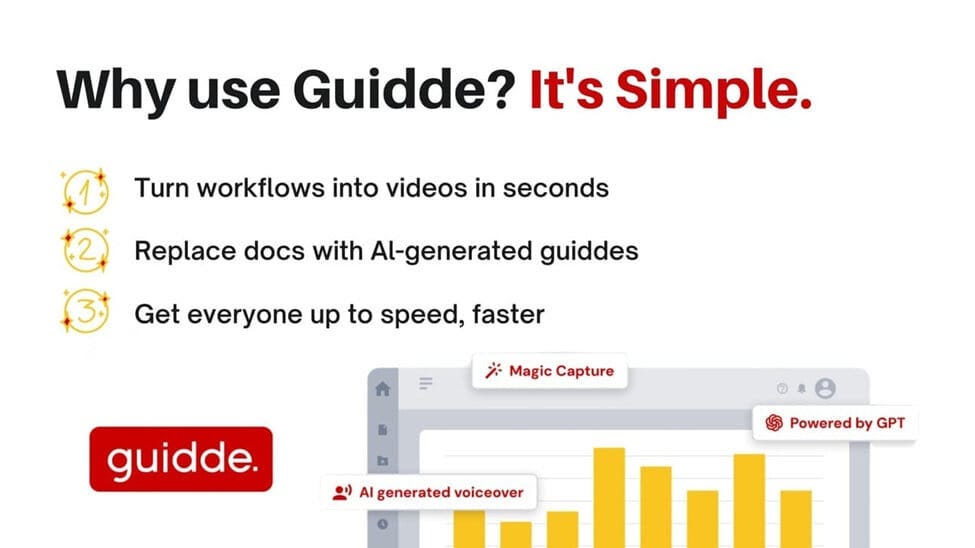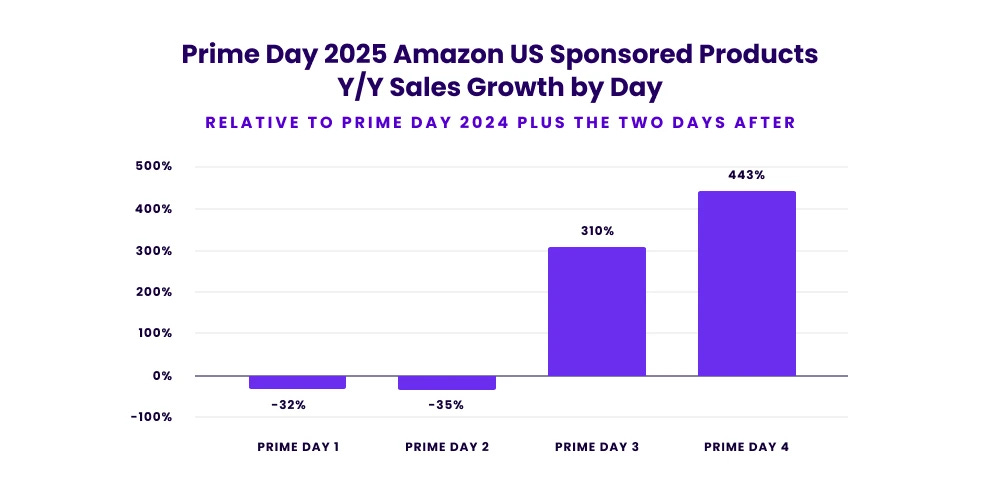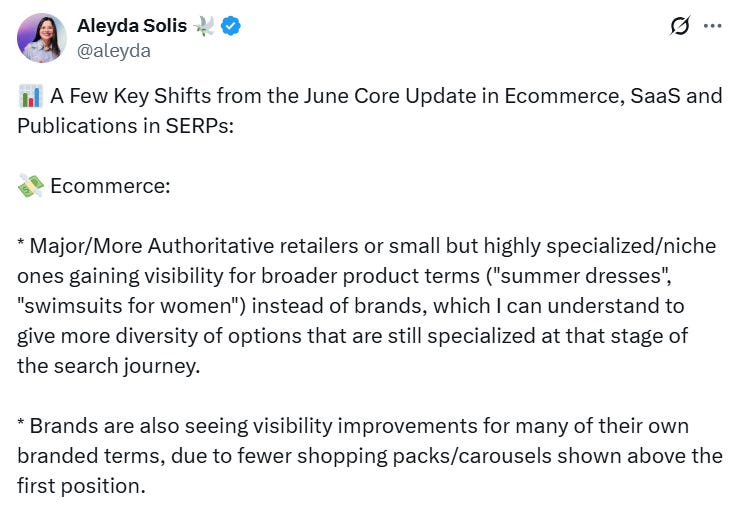2AM Cart Is the One That Converts
🕑Why Delay-Based Flows Are Quietly Costing You Thousands in DTC Revenue, Prime Day 2025: The 4-Day Format Shifted Buyer Behavior and Brand Strategy, and more!
Howdy Readers 🥰
In this newsletter, you’ll find:
🕑 The 2AM Cart Is the One That Converts: Why Delay-Based Flows Are Quietly Costing You Thousands in DTC Revenue
🛍️ Prime Day 2025: The 4-Day Format Shifted Buyer Behavior and Brand Strategy
🚀Tweet of the Day
If you’re new to Buyology then a hearty welcome to you, You’ve reached the right place alongside 50k+ amazing people, Before you forget, if someone forwarded this newsletter to you, don't forget to subscribe to our newsletter so you never miss out!
Together with Guidde
Never Explain That Task Again - Let Guidde Handle It
Product launches. CX handoffs. Inventory workflows. Every brand has processes that break when things move fast.
Guidde puts that on autopilot. It's a GPT-powered browser extension that turns your live tasks into beautiful, step-by-step video SOPs, complete with visuals, captions, voiceover, and call-to-action.
1️⃣ Hit capture once, and Guidde records your screen
2️⃣ AI turns it into a visual guide you can edit, brand, and reuse instantly
3️⃣ Share or embed it in Shopify, Notion, Slack, or onboarding emails, no tech skills needed
You’ll save 11x the time documenting workflows, while keeping your team and contractors perfectly aligned.
From returns to product updates to Meta Ads, Guidde scales your ops without turning you into the bottleneck.
The best part? The extension is 100% free.
🕑 The 2AM Cart Is the One That Converts: Why Delay-Based Flows Are Quietly Costing You Thousands in DTC Revenue
A customer adds to cart at 2:11 AM. Your flow sends the first abandoned cart reminder at 10 AM.
By then, the intent is gone, the tab is closed, and your sale is dead on arrival. This isn’t a deliverability issue. It’s a recency decay issue, and most DTC brands don’t realize they’ve architected it into their flows. Let’s fix that.
🔥 Why 2AM Clicks Are Your Hidden Goldmine
Late-night sessions aren’t casual; they’re emotionally driven. Think shift workers, stressed-out parents, impulse insomniacs, even doomscrollers escaping stress. When they add something to their cart, they’re actively solving a problem they’re feeling right now.
Delaying your email 6–8 hours (because “10 AM performs best”) is applying campaign logic to behavioral flows, a category error.
🧠 Recency = Revenue: The Psychology of Trigger Timing
Customers are more likely to complete a purchase within 30 minutes of intent action.
Behavioral studies indicate that urgency, emotion, and momentum decline rapidly after the first hour.
Yet most brands delay their first cart email to “batch optimize” sends. You’re not just delaying a message. You’re delaying the entire psychological payoff of that decision moment.
🧩 The Flawed Logic of “Send Time Optimization” in Flows
Send-time optimization makes sense for campaigns, not flows.
Flows should follow behavior, not a schedule.
Here’s the difference:
Campaigns = planned broadcast
Flows = responsive automation
When you delay a flow, you’re treating it like a campaign, which destroys its job: to respond to live signals.
✅ Fix It: What Elite Brands Are Doing Instead
Abandonment triggers within 3–10 minutes, not hours
No send-time delay logic in lifecycle automations
Use time-since-action, not time-of-day, as your trigger
Tag late-night behaviors and create 1:1 windows, even for upsells
If your ESP supports event-triggered logic, use it. If not, you’re running 2022 logic in a 2025 world.
Why It Matters
Your most profitable flows aren’t built on clever design or long copy. They’re built on timing precision.
Every minute you wait after a high-intent action, conversion probability drops. So when the 2AM cart happens, your automation should whisper “still thinking about it?” before they’ve even closed the tab. Speed wins. Always has. Always will.
🛍️ Prime Day 2025: The 4-Day Format Shifted Buyer Behavior and Brand Strategy
Amazon Prime Day 2025 stretched from 2 to 4 days, doubling down on time, traffic, and strategic complexity. While the early days delivered volume, the real value emerged in the second half, from higher order values to new customer acquisition.
The Breakdown:
1. Sales Momentum Peaked Late in the Event - Prime Day 2025 followed the familiar pattern of Day 1 driving the most single-day sales (34%), but momentum shifted hard by Days 3 and 4. Compared to 2024, Days 3 and 4 saw massive Sponsored Product sales surges: +310% and +443%, respectively.
2. Later Shoppers Were More Likely to Be New Customers - New-to-brand conversions grew as the event progressed, peaking at 70% on Day 3 and holding at 69% on Day 4. That’s a 10%+ lift versus Day 1, when most buyers were returning customers.
3. Clickthrough Rate (CTR) Spiked, But Context Matters - CTR on Sponsored Products rose 81% year over year, marking a sharp jump from 2024. But this was likely driven by Amazon’s algorithm and placement tweaks, not a sudden burst of consumer interest.
Prime Day 2025 was still the biggest ecommerce event of the year, with U.S. online spend jumping by $24.1B and surpassing Black Friday twofold. But consumers are no longer loyal to one platform, 82% browsed multiple marketplaces. With 36% of shoppers demanding deeper discounts, advertisers must now balance aggressive pricing with smarter ad timing.
🗝️ Tweet of the Day
Advertise with Us
Wanna put out your message in front of over 50,000 best marketers and decision makers?
Checkout our Partner Kit here🤝
At Buyology, we care about our readers and want to provide the best possible experience. That's why we always look for ways to improve our content and connect with our audience. It would be amazing if you could hit us up with feedback about our content or absolutely anything, we are always up for a chat 🥰
Thanks for your support, We'll be back with more such content 🥳



